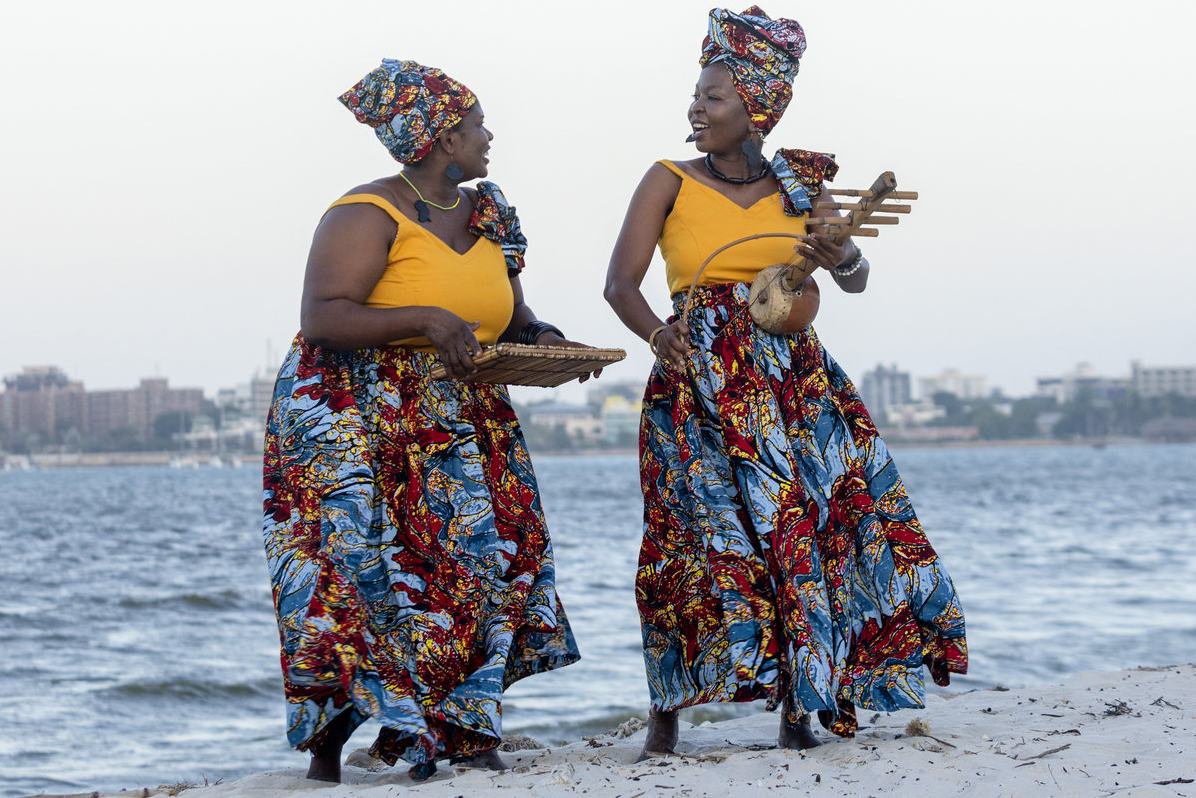

The Zawose Queens
Part of the Wagogo tribe, the Zawose family are the most internationally recognized group of musicians from the hilly Dodoma region of Tanzania, and they are masters of Gogo music, which not only incorporates the instruments mentioned above, but also includes haunting choral vocals as well as dance. And The Zawose Queens, a duo featuring the late Hukwe’s daughter Pendo and his granddaughter Leah, are making their debut on the same label that recorded their father 28 years ago. And because this is a Real World production, The Zawose Queens’ album can sometimes be as slick as the family’s home performances are raw. The label has long trafficked a sort-of “global pop” music, often to the benefit of artists even if the label is sometimes accused of watering down the supposed authenticity of the music. But that issue is barely apparent here.
Maisha has its roots in Wagogo legitimacy. “Dunia Hii,” for example, wraps the duo’s vocal harmonies around the kind of dark, repetitive mbira-based grooves that have been percolating in the region seemingly forever. “Luelelule” once again falls back on deep, repetitive ilimba and chizeze for a deliciously stoned accompaniment to the vocals. At one point, you can hear someone moving a microphone, suggesting this track was straight from the field. In terms of rhythm and trance, it’s not a far cry from this video (below) featuring unadulterated recordings of Wagogo musicians and released on the collection Sing to the Well.
Some of the album is more produced but no less potent for it. Opening track “Kuseka” begins a cappella in the tradition of so much of the region’s music, before the groove cushions the duo’s voices. Burbling synth work sneaks in here and there, but this stuttering, locked- funk that would cook a sweaty club or dominate a backyard party. It’s undeniable.
“Mapendo” leaves room for a Robert Fripp-ish lead guitar line, but also breaks down, the vocals echoing each other in rhythm before the ensemble charges in again. Later in the track, everyone save a single vocalist and the mbira drop out, demonstrating how experimental production becomes a natural extension of centuries-old rhythm and harmony. If Maisha is your introduction to the Zawose family or Wagogo music in general, it has plenty to offer. What Real World has done here has been largely to give the Queens a studio to work in. Otherwise, much of this is an honest summation of the music, 21st-century style, infectious and bottomless in equal measure.
Further listening:
Search RootsWorld
|